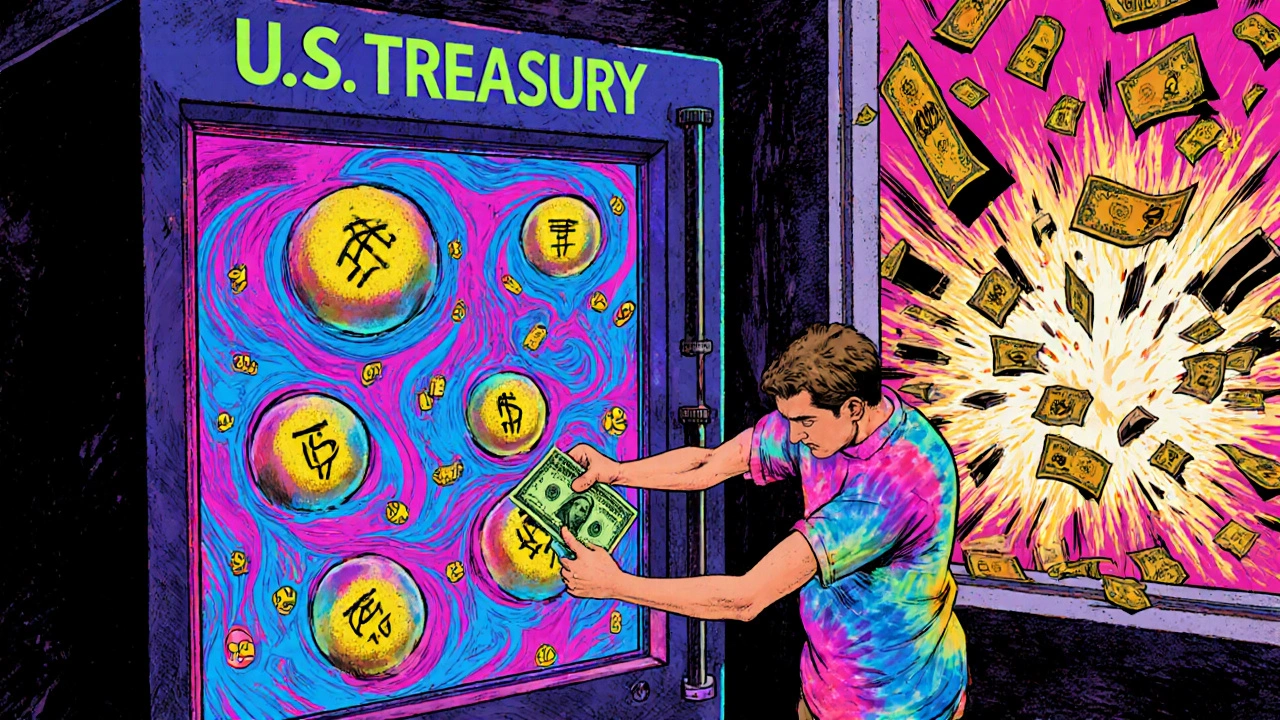Treasury Bills: What They Are, Why They Matter, and How to Use Them
When you hear Treasury bills, short-term IOUs issued by the U.S. government to raise money. Also known as T-bills, they're one of the safest places to park cash because the U.S. has never defaulted on its debt. Unlike stocks or bonds, T-bills don’t pay interest upfront—they’re sold at a discount and mature at face value. If you buy a $1,000 T-bill for $990, you get $1,000 back when it matures, and the $10 difference is your return.
Treasury bills are a core part of any smart investor’s toolkit, especially when you’re waiting to deploy cash or need to protect against market drops. They’re not for getting rich—they’re for not losing. And in a world where banks fail, crypto crashes, and inflation eats away at savings, that’s powerful. T-bills are directly tied to the Federal Reserve’s interest rate policy, the central bank’s main tool for controlling inflation and economic growth. When the Fed raises rates, T-bill yields go up. When it cuts, they drop. That makes them a real-time barometer of where the economy is headed.
They’re also linked to risk-free rate, the theoretical return on an investment with zero risk, used as a baseline for pricing everything else. If you’re comparing a corporate bond, a CD, or even a high-yield savings account, you’re really asking: "How much extra am I getting over what I’d make with a T-bill?" That’s why even big institutions like pension funds and hedge funds hold them—not for excitement, but for stability.
Most people buy T-bills through TreasuryDirect.gov, or through their brokerage. They come in 4-week, 8-week, 13-week, 26-week, and 52-week terms. No coupons. No monthly payments. Just a clean, simple payout. And because they’re backed by the full faith and credit of the U.S. government, they’re exempt from state and local taxes. That can make a real difference if you live in a high-tax state like California or New York.
You’ll find T-bills mentioned in posts about diversification, emergency funds, and international rebalancing because they’re the quiet backbone of many portfolios. When stocks are wild, bonds are shaky, and currencies are swinging, T-bills hold steady. They’re the anchor you don’t see until the storm hits.
Some think T-bills are boring. They’re right. But boring works. In 2022, when inflation hit 9%, T-bill yields jumped past 4%—something most savings accounts hadn’t seen in 15 years. People who kept cash in them didn’t make a killing, but they didn’t lose ground either. Meanwhile, others chased high-yield crypto or speculative stocks and got burned. T-bills won by staying still.
Below, you’ll find real-world breakdowns of how T-bills fit into modern portfolios, how to buy them without paying extra fees, and when to swap them out for something else. No fluff. Just what works when you’re trying to protect your money, not gamble with it.





